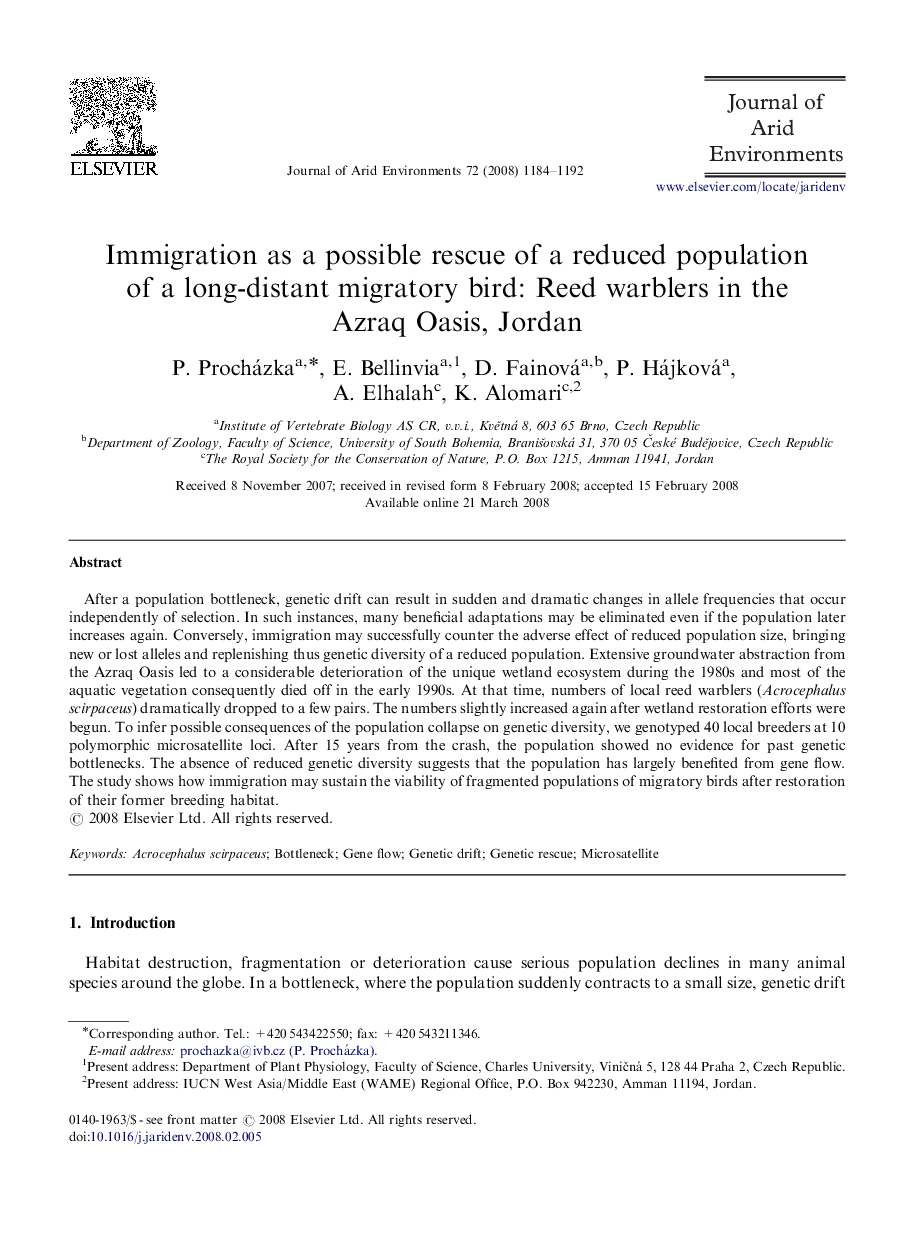| Article ID | Journal | Published Year | Pages | File Type |
|---|---|---|---|---|
| 4393922 | Journal of Arid Environments | 2008 | 9 Pages |
Abstract
After a population bottleneck, genetic drift can result in sudden and dramatic changes in allele frequencies that occur independently of selection. In such instances, many beneficial adaptations may be eliminated even if the population later increases again. Conversely, immigration may successfully counter the adverse effect of reduced population size, bringing new or lost alleles and replenishing thus genetic diversity of a reduced population. Extensive groundwater abstraction from the Azraq Oasis led to a considerable deterioration of the unique wetland ecosystem during the 1980s and most of the aquatic vegetation consequently died off in the early 1990s. At that time, numbers of local reed warblers (Acrocephalus scirpaceus) dramatically dropped to a few pairs. The numbers slightly increased again after wetland restoration efforts were begun. To infer possible consequences of the population collapse on genetic diversity, we genotyped 40 local breeders at 10 polymorphic microsatellite loci. After 15 years from the crash, the population showed no evidence for past genetic bottlenecks. The absence of reduced genetic diversity suggests that the population has largely benefited from gene flow. The study shows how immigration may sustain the viability of fragmented populations of migratory birds after restoration of their former breeding habitat.
Related Topics
Physical Sciences and Engineering
Earth and Planetary Sciences
Earth-Surface Processes
Authors
P. Procházka, E. Bellinvia, D. Fainová, P. Hájková, A. Elhalah, K. Alomari,
